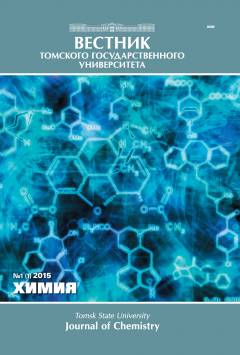Investigation of oxidative coupling of methane on Sr2TiO4 catalysts: influence of preparation methods
Oxidative coupling of methane (OCM) is one of the promising ways of obtaining ethane-ethylene mixture directly from natural gas, without the stage of synthesis gas production. The main task is to search for effective catalytic systems that allow achieving a high yield of the target products. The process is homogeneous-heterogeneous: Activation of methane occurs on active catalyst centers, i.e. the formation of methyl radicals CH3-, and their further recombination proceeds in the gas phase with the formation of C2-hydrocarbons. In recent years, interest in the perov-skite-like structures of Sr2TiO4 has increased, because they are often more effective than single-component oxide catalysts. Their catalytic activity depends on the properties of the catalysts, which are formed at the stage ofpreparation. In this work, the effect of the preparation of Sr2TiO4 catalyst samples on their physico-chemical and catalytic properties was studied. The samples were characterized by XRD, mercury porosimetry, and BET methods. According to the XRD method, the samples studied had a crystalline phase with a perovskite-like structure, and all samples were well crystallized. The specific surface area of the samples was 0.6 to 3 m2/g, and the average pore size was 0.22 to 1.59 цm. It is shown that the highest surface is formed using the precipitation method from the aqueous solution of the TiO2 suspension by the precipitant (NH4)2CO3, and the lowest surface is formed using the method offormation of titanate and strontium complexate with citrate ligands. The smallest pore size, 0.22 цm, is observed in the sample obtained by precipitation from the aqueous solution of the TiO2 suspension with the precipitant (NH4)2CO3, and the largest pore size, 1.59 цm, is by the method of formation of titanate and strontium complexate with citrate ligands. The catalytic activity was tested in the reaction of oxidative condensation of methane at 700-900°С. It is shown that, under the conditions of the experiments, the most active catalysts are samples precipitated by K2CO3, which requires further study. It is shown that under conditions of the experiments, the most active catalysts are those obtained by coprecipitation or precipitation in the presence of a suspension of a K2CO3 precipitator.
Keywords
окислительная конденсация метана, слоистый перов-скит, Sr2TiO4, синтез, осаждение, цитратный метод, oxidative coupling of methane, layered perovskite oxide Sr2TiO4, synthesis, precipitation, citrate method, suspensionAuthors
| Name | Organization | |
| Ivanova Yuliya A. | Boreskov Institute of Catalysis, Siberian Branch of the Russian Academy of Sciences | ivanova@catalysis.ru |
| Petrov Roman V. | Boreskov Institute of Catalysis, Siberian Branch of the Russian Academy of Sciences | petrov@catalysis.ru |
| Reshetnikov Sergey I. | Boreskov Institute of Catalysis, Siberian Branch of the Russian Academy of Sciences | reshet@catalysis.ru |
| Isupova Lyubov A. | Boreskov Institute of Catalysis, Siberian Branch of the Russian Academy of Sciences | isupova@catalysis.ru |
References

Investigation of oxidative coupling of methane on Sr2TiO4 catalysts: influence of preparation methods | Vestnik Tomskogo gosudarstvennogo universiteta. Chimia – Tomsk State University Journal of Chemistry. 2017. № 8. DOI: 10.17223/24135542/8/3
